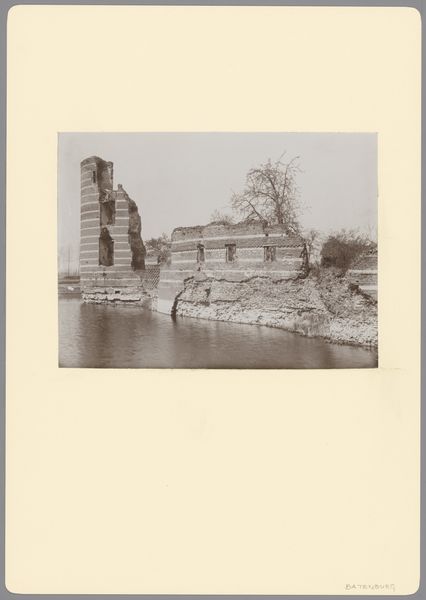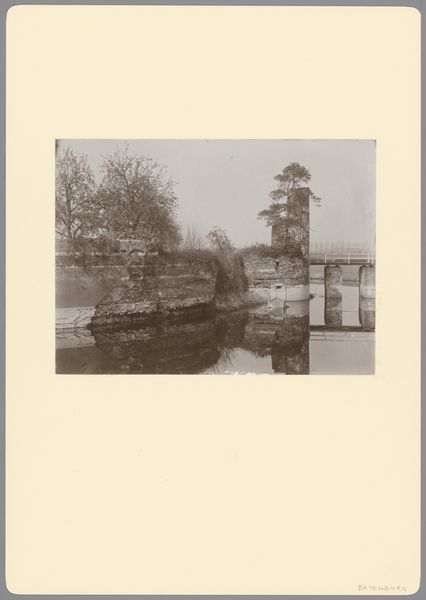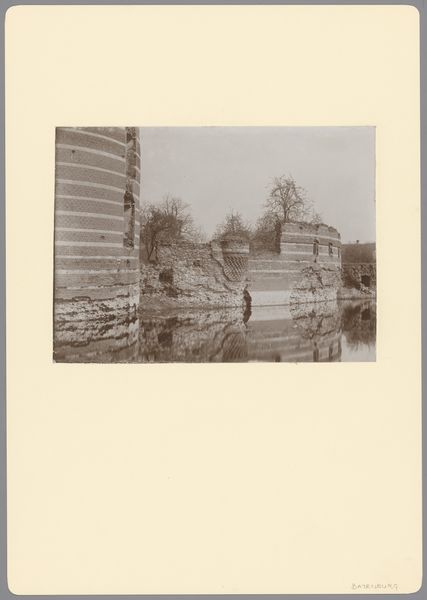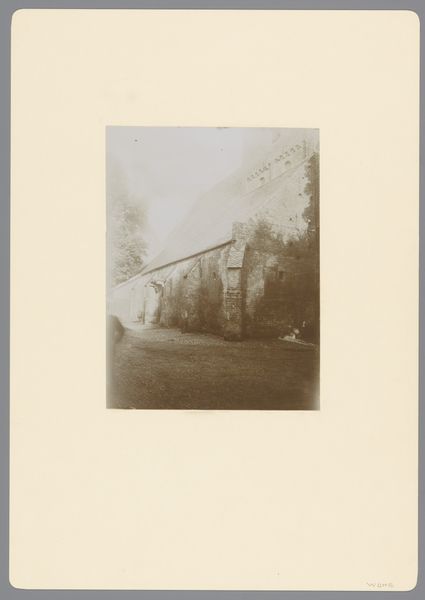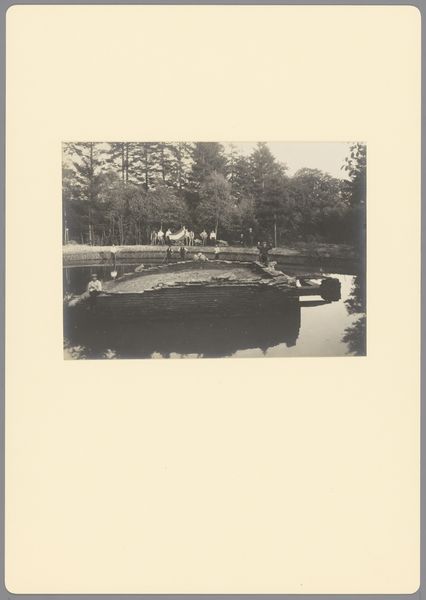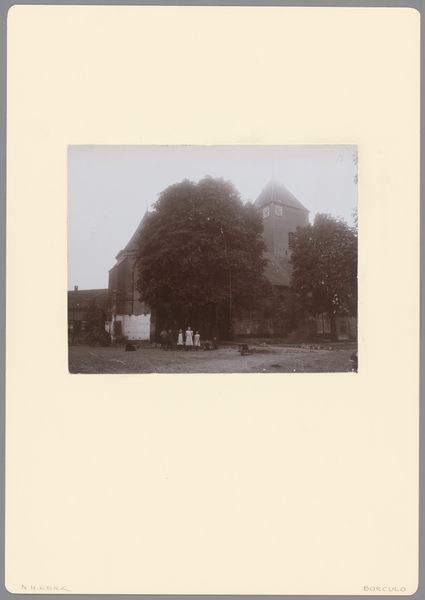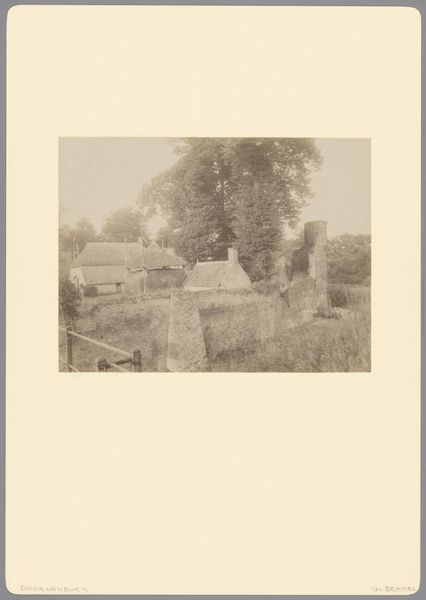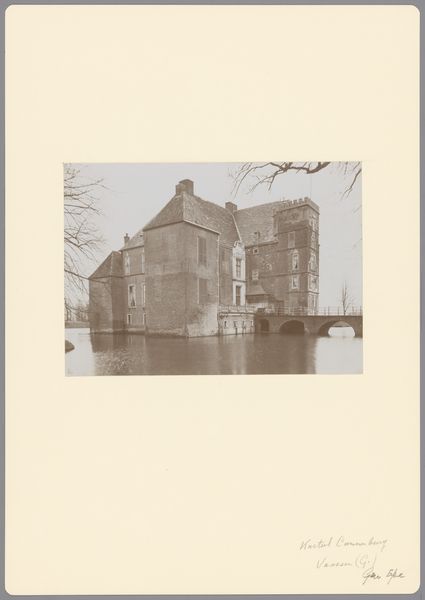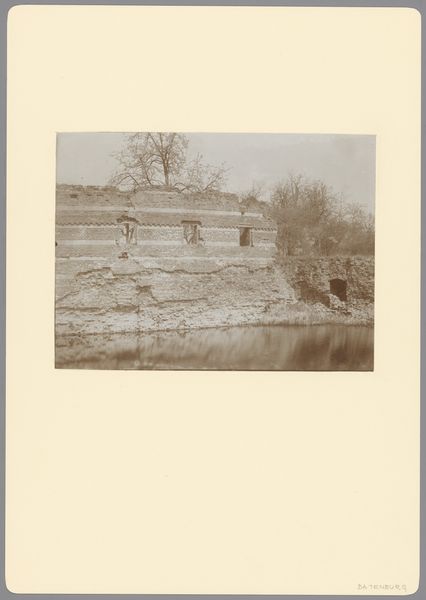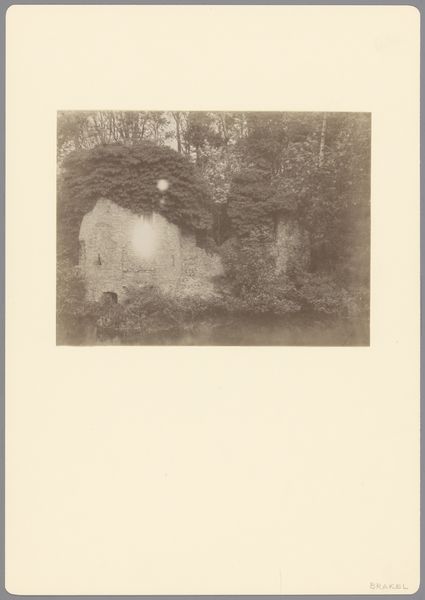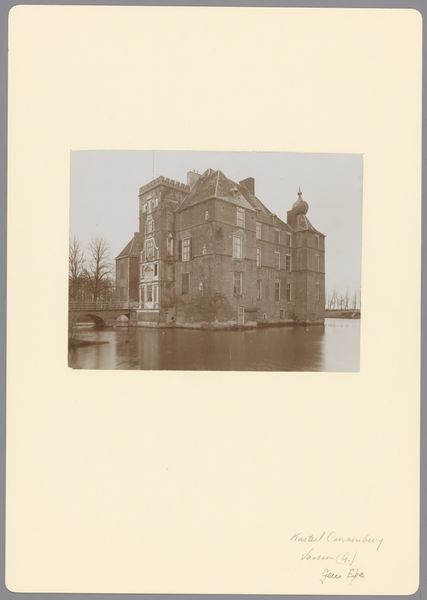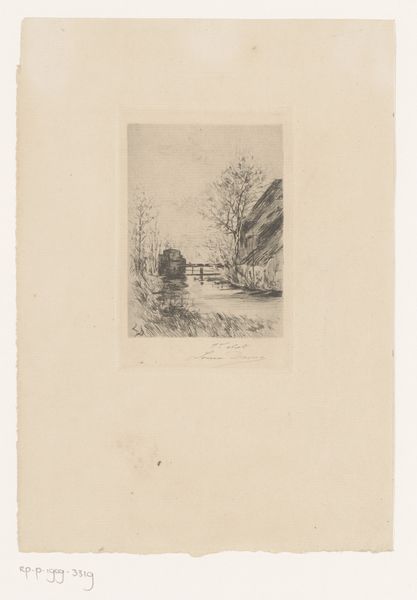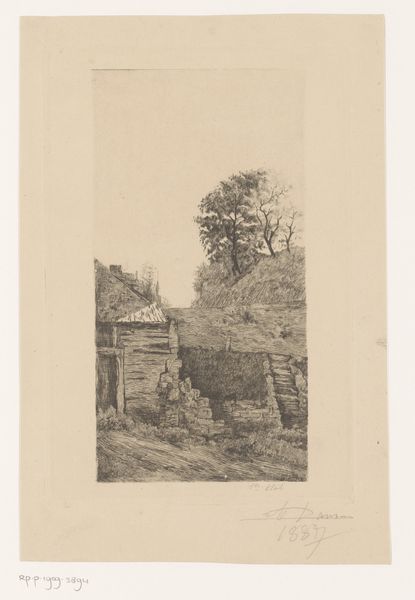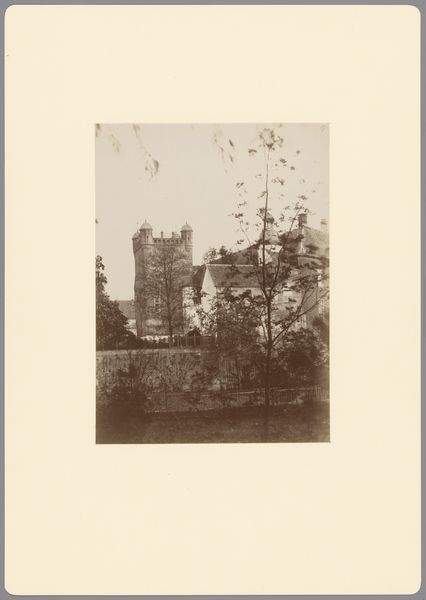
Dimensions: height 170 mm, width 231 mm
Copyright: Rijks Museum: Open Domain
Editor: So, this photograph, “Gedeelte van de kasteelruïne te Batenburg,” was taken in 1906 by an anonymous photographer from Monumentenzorg. Looking at it, I'm struck by how weathered and ruined the structure appears; you can really feel the passage of time etched into its surfaces. What do you see when you look at this piece? Curator: I see the exposed materiality of history. Note the stratified layers of brick and stone in the ruin. This reveals the labour inherent in its construction, the physical effort of quarrying, transporting, and laying each individual component. It speaks to the resources extracted, the craft employed, and the eventual decay—a cycle of creation and disintegration. How do you think the anonymous nature of the photographer impacts our understanding? Editor: That’s interesting. It almost detaches it from individual expression, focusing it more on the subject. Is that what you mean? And if Monumentenzorg commissioned this, were they trying to catalogue or preserve through photography what was being physically lost? Curator: Exactly! Consider Monumentenzorg’s purpose. They were likely documenting this ruin not for artistic merit, but for preservation and inventory. This photograph then becomes a record of material degradation. The soft sepia tone even seems to amplify a sense of fragility and the relentless, inevitable process of erosion. Does the water reflecting the ruin add another layer to this? Editor: Yes, definitely! The reflection blurs the line between the solid, physical structure and its ephemeral representation, like a fleeting memory. This makes me consider, then, how the mass production of photographs would affect artistic expression at that time? Curator: Precisely. Photography democratized image-making, shifting artistic focus towards capturing real-world conditions and social changes rather than idealizing the past. The materiality of photographic processes themselves—the chemical reactions, paper types, and printing methods—became areas of artistic exploration. It shows a shifting historical understanding where the focus is moving towards a scientific approach to the real, material world. Editor: I hadn't thought about the connection to Monumentenzorg that way before. Now I can appreciate how the image itself and the materials with which it was made reflect a whole system of material processes. Thank you! Curator: Absolutely! Seeing art through the lens of material and production opens up a whole new level of understanding and allows you to connect to the artwork in novel ways.
Comments
No comments
Be the first to comment and join the conversation on the ultimate creative platform.
